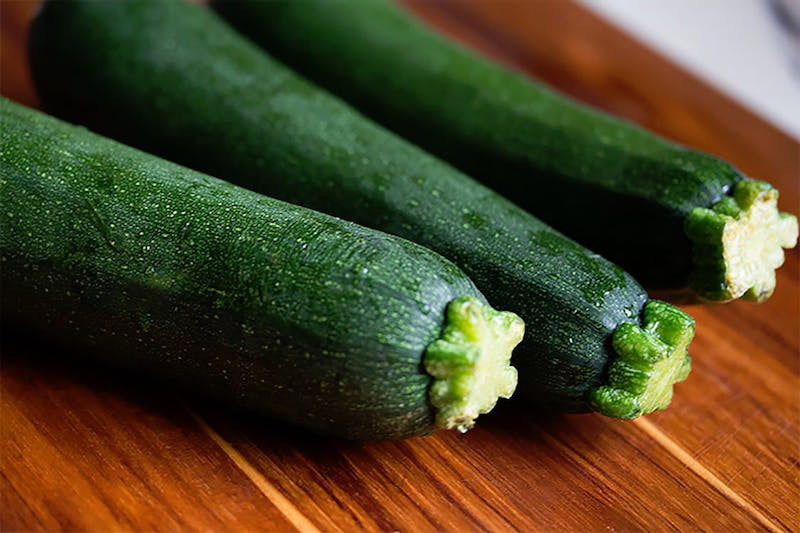Fibro Fix Blog

Heart-Protective Hawthorn 2
Keeping your heart healthy is not much different from keeping the rest of you healthy. The key things are stress management, appropriate exercise, and a nutrient-dense, anti-inflammatory diet—one that is high in brightly colored, low-glycemic vegetables, complete proteins from good quality sources, natural fats, and low in refined carbohydrates and industrial oils (like cottonseed, safflower, and corn). As with most organs and body systems, though, if you’re especially concerned with heart health, there are nutrients that can be helpful in levels above those you would typically consume from foods. One plant whose extracts have been shown to be particularly beneficial for cardiovascular health is hawthorn.
The heart can become diseased or damaged for many reasons, and some of the symptoms—like chest pain (known in medical terms as angina), shortness of breath upon exertion, high blood pressure, and fatigue—can be the result of the heart struggling to pump enough blood to the rest of the body, or the blood vessels being too narrow or stiff to accommodate adequate blood flow. Hawthorn (Crataegus oxyacantha) has been shown to improve both of these issues; it can help the heart muscle contract more strongly, leading to a more forceful push of blood through the body, and it also helps dilate the blood vessels, which allows the proper amount of blood to flow through them. A strong heart muscle and healthy blood vessels allow the rest of the body to receive the oxygen carried in the blood. When your heart is struggling to pump effectively or the vessels can’t hold as much blood as they should, your cells receive less oxygen, which is why fatigue and shortness of breath are common effects of heart disease. Hawthorn has also been shown to be mildly effective for high blood pressure because it helps with the dilation of blood vessels.
The history and benefits of hawthorn
For centuries hawthorn has been used to support healthy heart function, particularly in Europe, where legends of the healing properties of this medicinal herb date back to the 13th century. It seems only fitting that this botanical is heart-protective, as the hawthorn tree is considered to be a tree of love. Hawthorn is related to the rose family, and is noted for its long thorns and bright red, apple-like berries. It is used in tinctures, teas and capsules to promote heart heath, but the fresh berries are also used for culinary purposes in pies, jams, wines, vinegars and syrups.
Hawthorn leaves, berries, and flowers are high in antioxidants, which can protect heart tissue and blood vessels from oxidative damage caused by free radicals. The vitamin C and citrin bioflavonoid content of hawthorn help stabilize the collagen that makes up the structure of the blood vessels. Hawthorn also has a beneficial effect on blood lipids, which are often used as markers for heart health. Animal studies have shown hawthorn extracts to mildly limit increases in total cholesterol, LDL, and triglycerides in rats fed a diet designed to raise those indicators.
In a study of heart attacks in rats, pre-treatment with hawthorn extract reduced levels of enzymes used to indicate the degree of damage the heart has suffered. So hawthorn may strengthen the heart and decrease the amount of tissue damage that results if a cardiac event does occur.
The foundation of a cardio-protective diet is based around reducing the intake of refined carbohydrates and industrially produced vegetable oils. Hawthorn extract can be a beneficial addition for supporting heart function and works best when coupled with other healthy lifestyle practices, such as a healthy exercise routine, stress reduction and a nutrient rich, anti-inflammatory diet.
- David Brady
- Tags: antioxidants berries cardio-protective diet hawthorn heart heart health heart healthy

Alzheimer's Disease: Type 3 Diabetes? 2
As if obesity, type-2 diabetes, and metabolic syndrome weren’t enough, evidence indicates we can now add Alzheimer’s disease (AD) to the list of conditions resulting, in part, from a mismatch between our biological makeup and our modern diet and lifestyle. It is no coincidence that we are witnessing a skyrocketing increase in the incidence of AD, which parallels those of the other chronic health issues of our time. Many of these have some of their roots in carbohydrate intolerance—that is, the body’s loss of the ability to properly handle certain amounts or types of carbohydrate foods. In fact, the connections between glucose (carbohydrate), insulin dysregulation and Alzheimer’s disease are so strong that many researchers commonly refer to AD as “type 3 diabetes.”
The blood-brain-barrier is a powerful border that separates the brain from the rest of the body, and carefully regulates the entry of fuels and nutrients into the brain. However, it is not capable of protecting the brain from the negative effects of an onslaught of refined carbohydrates, damaged vegetable oils, and nutritionally empty processed foods. The brain is an intensely energy-hungry organ. Accounting for only about 2% of body weight, the brain uses around 20% of the body’s glucose and oxygen, so anything that impairs its ability to metabolize glucose would have serious consequences for cognitive function, memory, and behavior.
Although the outward manifestations of AD—such as memory loss, confusion, and disturbing behavioral changes—are easy to observe, there are underlying contributing factors at a cellular level which can be measured and quantified. One of the earliest and most significant biochemical changes in the AD brain is a decrease in the rate at which the brain uses glucose, called the cerebral metabolic rate of glucose (CMRglu). PET scans show that AD patients have as much as a 45% reduction in CMRglu compared to healthy people of the same age. Considering the brain’s need for a constant supply of glucose, some researchers see this decline in the brain’s ability to use glucose as the predominant and most profound abnormality in the condition. In fact, AD can be seen as the end result after a significant number of brain cells (neurons) have “starved to death” due to their inability to use their primary fuel source.
Interestingly, the decline in CMRglu can be observed in people at risk for AD (based on family history or genotype) as early as their 30s or 40s, long before overt signs of AD have manifested. Thus, the decreased CMRglu can be seen as a kind of “canary in the coal mine”—an early warning sign that something is going awry in the brain. The extent of the reduction in CMRglu is tied to AD severity. A study that measured CMRglu in people ages 50-80 showed that reduced CMRglu at the time of testing predicted progression from normal cognitive function to AD, with the greatest reductions correlating with the quickest development of full-blown AD. In other words, the lower the brain’s ability to use glucose, the more quickly someone is likely to develop AD, and the more severe the condition is likely to be.
What’s interesting to note is that at the time of testing, even though the younger subjects already had a decreased CMRglu, they were all cognitively normal. This means the brain might be able to compensate for years before damage is so widespread that overt, outward symptoms of AD become obvious. The normal forgetfulness and foibles we associate with “just getting older”—Where did I leave my keys? Don’t I have an appointment somewhere this week?—might be the earliest signs that the brain is struggling to fuel itself.
Considering the connections between Alzheimer’s disease and problems with glucose handling, the term “type 3 diabetes” is quite insightful.
Sources
- de la Monte SM, Wands JR. Alzheimer's disease is type 3 diabetes-evidence reviewed. J Diabetes Sci Technol. 2008 Nov;2(6):1101-13.
- Hoyer S1, Nitsch R, Oesterreich K. Predominant abnormality in cerebral glucose utilization in late-onset dementia of the Alzheimer type: a cross-sectional comparison against advanced late-onset and incipient early-onset cases. J Neural Transm Park Dis Dement Sect. 1991;3(1):1-14.
- Reiman EM et al. Functional brain abnormalities in young adults at genetic risk for late-onset Alzheimer's dementia. Proc Natl Acad Sci U S A. 2004 Jan 6;101(1):284-9.
- Mosconi L et al. Hippocampal hypometabolism predicts cognitive decline from normal aging. Neurobiol Aging. 2008 May;29(5):676-92.
- David Brady
- Tags: Alzheimer’s Disease Diabetes functional medicine obesity wellness and prevention

When Life Gives You Lemons, Take Lemon Balm 0
In the 21st century, the hallmarks of American childhood no longer revolve around apple pie, homemade meals, and songs like “Take Me Out to the Ball Game.” Instead, children’s lives are characterized by the consumption of fast food, innovative technology and a plethora of after-school activities. They are more familiar with the family van than the family room. An inescapable reality exists in which America is morphing into a society branded by speed and productivity. However, despite the accomplishments achieved through fast-paced lifestyles, we cannot ignore the inner turmoil that occurs as our bodies strive to maintain optimal health and wellness during periods of chronic stress.
Perhaps, one of the greatest pieces of evidence of this lifestyle change can be witnessed in the physician’s office. Panic attacks, anxiety, depression, insomnia, fatigue and associated conditions are on the rise. Antidepressants, antipsychotics, sleep aids and narcotics are common drugs seen in most American homes. It appears that the 21st century American could benefit from something akin to the fictitious “chill pill.” While many facetiously throw around references to such a pill in the famous cliché, others are aware that such a remedy may actually exist in the form of the ancient herb, lemon balm (Melissa officinalis).
Lemon balm has a history of promoting relaxation and a calm demeanor. Back in the 15th century, the famous Swiss physician Paracelsus dubbed lemon balm the “elixir of life,” because it promoted health and longevity. English herbalist, John Gerard, even believed that lemon balm was a comforting herb, helping to drive away sadness. The citrus flavor of lemon balm’s essential oil made it a popular choice for flavoring drinks, freshening rooms and polishing furniture. Its most ancient use as a bee attractant made it indispensable to beekeepers. When planted near beehives, lemon balm would ensure the busy bees stayed close to home.
Modern science attributes lemon balm’s calming, sedative-like properties to the herb’s ability to support the brain’s neurotransmitters – chemical hormones responsible for influencing our moods and circadian rhythms (the body’s 24 hour biological clock). When we are under chronic stress, certain neurotransmitters are awakened in the brain and act to stimulate us, keeping us alert and active. Sometimes, an abundance of these neurotransmitters can lead to anxiety, panic, and depression, and can interrupt our sleep patterns. When our stress-induced neurotransmitters increase, our bodies attempt to balance the scales by producing more calming neurotransmitters. These chemical hormones are responsible for relaxing our muscles, eliciting overall calmness, and improving our sleep habits. Lemon balm acts to support healthy production of the calming neurotransmitters and therefore, helps to balance the stimulatory neurotransmitters that govern our stressful lifestyles.
Lemon balm may also owe its success to the fact that it supports the body’s ability to manage pain appropriately. Many times chronic pain can be a trigger for anxiety, depression and other mental disturbances, and it can also provide a legitimate reason for insomnia. Chronic, stress-induced pain may start with something as simple as a sports injury or bad posture we assume when we bend over a computer desk for long periods of time. Regardless of how chronic pain originates, lemon balm may help promote a healthy pain response that is not overly aggressive.
Stress not only affects our mood and sleep, and creates tense, painful muscles, but it also triggers various digestive problems. Whether an individual is struggling with stress-induced irritable bowel syndrome or the intake of too much fast food, the digestive system is not alone in feeling the effects of our fast-paced lifestyles. Lemon balm comes to the rescue yet again, helping to support a healthy digestive response when we may not be treating our digestive system so kindly.
Although we may dream of being able to hit the pause button on life, reality pushes us forward, demanding more of our time, attention, and ultimately, our health. However, lemon balm can act as a buffer against everyday stressors, aiding our body in its effort to keep our moods elevated, our sleep restored, our muscles relaxed, and our pain managed. Ultimately, this ancient and effective herb, aids us in our ability to simply take a deep breath and chill.
- David Brady
- Tags: chronic illness functional medicine lemon lemon balm nutrition summer wellness and prevention

Magnesium for Men’s Health 0
When it comes to supporting men’s health, exotic sounding nutrients and food sources tend to get most of the attention, such as coenzyme Q10 for heart health, red yeast rice for lipid management, and saw palmetto for prostate health. While these compounds can certainly be beneficial for health concerns in aging men, they shouldn’t crowd out the seemingly commonplace—but tried-and-true—workhorses of human physiology. One of the ordinary, “everyday” nutrients at risk for being underestimated due to its seeming simplicity is magnesium. But don’t let this mineral’s quiet demeanor fool you. For playing a role in men’s health, magnesium is anything but simple.
Three important health concerns that many men face as they age are heart disease, kidney stone formation, and erectile dysfunction. Fortunately, magnesium has been shown to be beneficial for all three. Supporting cardiovascular function is a primary concern for older men. Data from many studies support that magnesium intake is inversely correlated with calcification of the arteries—meaning, the more magnesium people consume, the lower the amount of blood vessel calcification. Compared to people with the lowest magnesium intake (self-reported), those with the highest had 58% reduced odds of having coronary artery calcification.
This is likely due to the complex interactions between calcium and magnesium when it comes to ensuring proper physiological function. Calcium and magnesium are both critical minerals to have in our diet, and magnesium may help the body regulate calcium balance, possibly by keeping it from being deposited in the soft tissue. (Vitamin K2 is also essential for this.)
High blood pressure—known in the medical world as hypertension—is a common sign of cardiovascular trouble, but it is often described as “the silent killer,” since it’s possible for someone to be hypertensive and not even know it. Low magnesium levels often go hand-in-hand with elevated blood pressure, illustrating the many roles magnesium plays in this issue. While calcium is regarded for its role in muscle contraction (squeezing), magnesium has the opposite effect: it is a well-recognized muscle relaxant. One way it accomplishes this is by providing a healthy counterbalance to calcium. But another way magnesium may beneficially affect blood pressure, specifically, is that it increases the production of nitric oxide. Nitric oxide is a vasodilator—it helps to relax blood vessels, which permits blood to flow through them more smoothly.
Another health concern for men is kidney stones. Stone formation is slightly more prevalent in men than women. There are several different types of stones, and they can form for a variety of reasons, but the most common are calcium-based, and they occur when calcium binds with other compounds and solidifies inside the body. (Specifically, it solidifies in places other than where it’s supposed to be solid, such as in bones and teeth.) Recognizing the importance of magnesium for balancing calcium, it’s not surprising that kidney stones often occur in the same people who have heart disease, and vice-versa. The complex interplay between calcium and magnesium suggests that the calcification of blood vessels, and the precipitation of calcium into solid stones, may both result from insufficient magnesium.
Aside from heart health and kidney stones, probably the most powerful, “real-world” concern for adult men of all ages, is sexual function. This issue moves to the forefront as men age, and some experience a decline in the ability to get and sustain an erection. One of the main causes of this may be reduced blood flow to the affected area. With this in mind, erectile function is another area where magnesium’s role in facilitating blood vessel relaxation may have a beneficial effect. Another factor that contributes to erectile dysfunction in aging men might be declining levels of male sex hormones (androgens). Interestingly, an additional feather in magnesium’s cap for supporting men’s sexual health is that it has been shown to positively affect anabolic hormonal status, including testosterone, in older men.
Considering leafy greens are good sources of magnesium, Popeye was right: men should eat their spinach!
Sources
- Maggio M, et al. The Interplay between Magnesium and Testosterone in Modulating Physical Function in Men. Int J Endocrinol. 2014;2014:525249.
- Hruby A, et al. Magnesium intake is inversely associated with coronary artery calcification: the Framingham Heart Study. JACC Cardiovasc Imaging. 2014 Jan;7(1):59-69.
- Alexander RT, et al. Kidney stones and cardiovascular events: a cohort study. Clin J Am Soc Nephrol. 2014 Mar;9(3):506-12.
- Houston M. The role of magnesium in hypertension and cardiovascular disease. J Clin Hypertens (Greenwich). 2011 Nov;13(11):843-7.
- David Brady
- Tags: functional medicine health Magnesium men's health nutrition summer supplement wellness and prevention

YOU SAY TOMATO, WE SAY…TREMENDOUS 0
It wouldn’t be summer without plump, juicy heirloom tomatoes piled high on a table at the farmers’ market, or containers of cherry tomatoes as sweet as raspberries reappearing in supermarkets for the season. Eating a rainbow of produce is an effective—and tasty—way to ensure intake of a wide array of nutrients and phytochemicals, and just within the tomato family itself, you can find red, green, yellow, orange and purple varieties.
Tomatoes can be found in stores year-round, but the drab, mushy, and mealy ones you come across in winter might as well be a completely different fruit from the plump, fresh, sweet ones available in the height of summer. In fact, tomatoes’ botanical name—Solanum lycopersicum—is reminiscent of sunlight, itself, while also providing the root of the word lycopene, which is a powerful antioxidant found in red and pink fruits and vegetables.
With their low carbohydrate content, fiber, and complement of nutrients, tomatoes fit nicely into many different nutritional strategies, including vegetarian, low-carb, and Paleo-style diets. Due to tomatoes’ natural sweetness, people on very low carbohydrate diets sometimes avoid them, but this isn’t necessary. Tomatoes—particularly when they’re in season—are sweet, and although they have a slightly higher glycemic index than, say, spinach and broccoli, their glycemic load is extremely low. This means it would take a very large amount of tomatoes to have an adverse impact on blood sugar; although, of course, individual sensitivity to carbohydrate varies. In the spectrum of carbohydrate-containing foods, tomatoes aren’t exactly cupcakes!
As for their nutrient content, tomatoes are a good source of vitamin C, vitamin K1, beta-carotene, and potassium. They are perhaps best known for the aforementioned antioxidant phytochemical, lycopene. Lycopene may help protect the skin from sunburn, and studies have shown it also has the potential to help support healthy cholesterol levels in the blood. Interestingly, lycopene concentration is higher in tomato products—such as tomato paste and tomato sauce—than in fresh tomatoes. Since lycopene and beta-carotene are both fat-soluble carotenoids, the body absorbs them best when they’re eaten along with some fat—in case you needed an excuse to drizzle some good olive oil over a fresh tomato salad, or sprinkle a little cheese on a bowl of zucchini noodles with tomato sauce.
As if their flavor and nutrient content weren’t good enough reasons to eat tomatoes, there’s another beneficial substance hiding in tomatoes, tucked away like a little secret: melatonin! It’s true: tomatoes contain a small amount of melatonin, and plant researchers believe it has a similar function in plants as it does in humans: it helps regulate a plant’s circadian rhythm. A study in which multiple tomato cultivars were grown in the same greenhouse, but some were grown in full sunlight while others were shaded, found that the shaded tomatoes had as much as 135% more melatonin than the non-shaded ones. This suggests that light exposure plays a role in their melatonin content, just as melatonin synthesis is regulated by photo-exposure in people. (Melatonin is synthesized as light exposure decreases, such as when the sun is setting, preparing people—and plants—for bedtime.) The amount of melatonin in tomatoes isn’t enough to act as a sleep aid, but it’s an interesting bit of trivia, nonetheless. (Imagine getting sleepy after a glass of tomato juice at breakfast!)
Don’t limit yourself to the more common red tomatoes. Other varieties bring additional nutritional properties, such as purple tomatoes, which have a higher anthocyanin and antioxidant content. Plant breeders recognize these compounds as helping increase the shelf-life and providing protection against certain plant pests, but they’re helpful for human health, as well.
With summer upon us, enjoy the bounty of tomatoes the season offers. But remember: ketchup is not a vegetable!
Sources
- Stahl W, Heinrich U, Aust O, Tronnier H, Sies H. Lycopene-rich products and dietary photoprotection. Photochem Photobiol Sci. 2006 Feb;5(2):238-42.
- Fuhrman B1, Elis A, Aviram M. Hypocholesterolemic effect of lycopene and beta-carotene is related to suppression of cholesterol synthesis and augmentation of LDL receptor activity in macrophages. Biochem Biophys Res Commun. 1997 Apr 28;233(3):658-62.
- Riga P, Medina S, García-Flores LA, Gil-Izquierdo Á. Melatonin content of pepper and tomato fruits: effects of cultivar and solar radiation. Food Chem. 2014 Aug 1;156:347-52.
- Klee HJ. Purple tomatoes: longer lasting, less disease, and better for you. Curr Biol. 2013 Jun 17;23(12):R520-1.

ZUCCHINI – YOUR NEW BEST FRIEND? 0
If you live in a farming community or have friends and neighbors who garden, you’ve probably been the lucky recipient of their surplus zucchini. The summer sun seems to make zucchini multiply inexplicably and prolifically, such that growers will look to foist their harvest on anyone and everyone they can.
But rather than bemoan the endless supply of this underrated vegetable, consider it a boon for a healthy diet. If you’re watching your carbohydrate intake, but find yourself missing your favorite pasta and noodle dishes, zucchini is your new best friend. If you can get your hands on a spiral slicing gadget—or can spare the time to cut long, thin strips by hand—the abundant supply of zucchini summer brings can be transformed into “zoodles,” which you can use to recreate spaghetti and meatballs, pad thai, and other dishes you might be craving, with the benefit of keeping things low-carb, gluten-free, or Paleo-compliant.
Zucchini belongs to the botanical family Cucurbitaceae, which includes many familiar summer and winter squashes and gourds, such as yellow, crookneck, delicata and acorn squash, pumpkins, watermelon, cucumbers and ornamental gourds.
Zucchini is a great addition to both omnivorous and vegetarian diets. It’s a good source of vitamins C and B6, riboflavin, vitamin A precursors, potassium, and manganese. It’s high in the carotenoid lutein, which is beneficial for eye health. Since lutein is a fat-soluble compound, and the body absorbs it better with a little bit of fat, it’s not a bad idea to add a pat of rich, yellow summer butter to steamed zucchini, or toss a pile of zucchini noodles with olive oil and garlic. Great side dishes for an outdoor dinner in the warm weather!
Zucchini is very low in carbohydrate, with a glycemic index that is practically negligible. It’s a good choice for filling a plate without racking up high calorie levels, although excess consumption can potentially lead to unpleasant gastrointestinal side effects. Part of this is due to the fiber content of this non-starchy vegetable, but another reason is that during storage and shipping, the carbohydrate content of zucchini changes a bit. One of the compounds that increases upon storage is raffinose. Raffinose belongs to the FODMAP category—fermentable, oligo-, di- and mono-saccharides and polyols. It’s an oligosaccharide that the human body lacks the enzyme to break down, so consumption of high amounts can result in gas and bloating.
With the growing popularity of “nose-to-tail” cooking for making use of all parts of animal foods, we shouldn’t forget that the same philosophy can be applied to vegetables. The yellow zucchini flowers that accompany each squash make a wonderful appetizer or side dish. A classic way to prepare these flowers is to stuff them with ricotta or goat cheese and fry them. Making zucchini bread or muffins is a good way to sneak these vegetables into unsuspecting children, and for those watching their starch intake, zucchini can be stuffed with an endless variety of toppings, including tomato sauce, olives, and fresh cheese, lending a pizza flavor, minus the dense bread base. Another way to make use of the avalanche of zucchini in summer is by preserving it, such as in relish, or simply blanching it and freezing it for winter. Dehydrating is another option, with crispy zucchini chips making a great, healthy snack for kids and adults alike.
Sources
- Sommerburg O, Keunen J, Bird A, van Kuijk FJGM. Fruits and vegetables that are sources for lutein and zeaxanthin: the macular pigment in human eyes. The British Journal of Ophthalmology. 1998;82(8):907-910.
- Mildred E. Mathias Botanical Garden. UCLA. Economic Botany. Cucurbitaceae.
